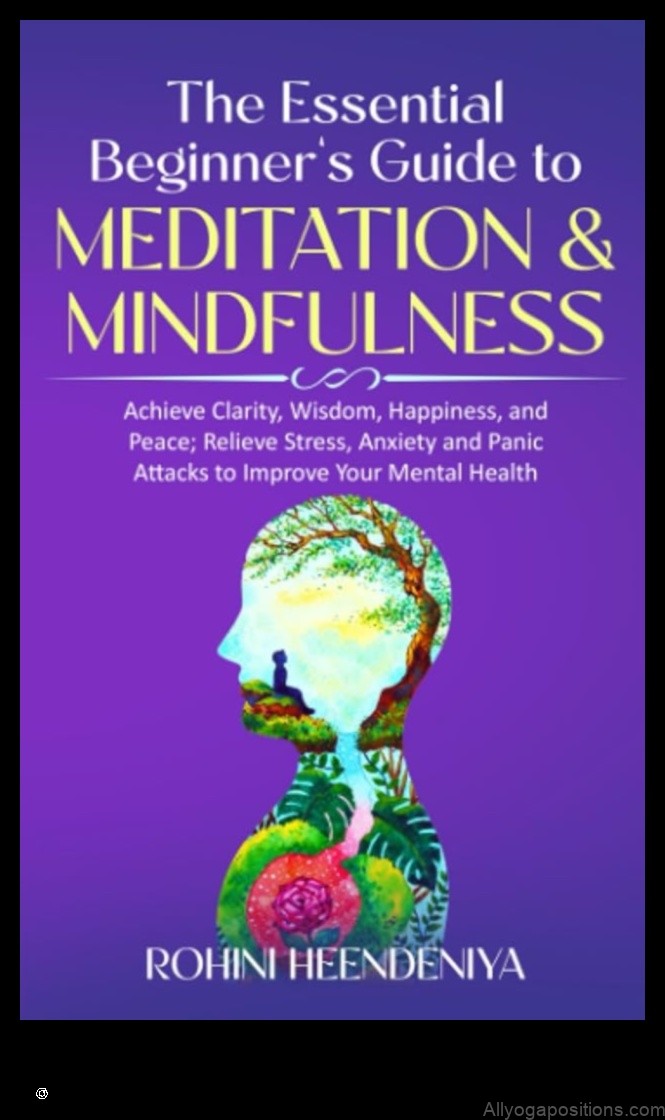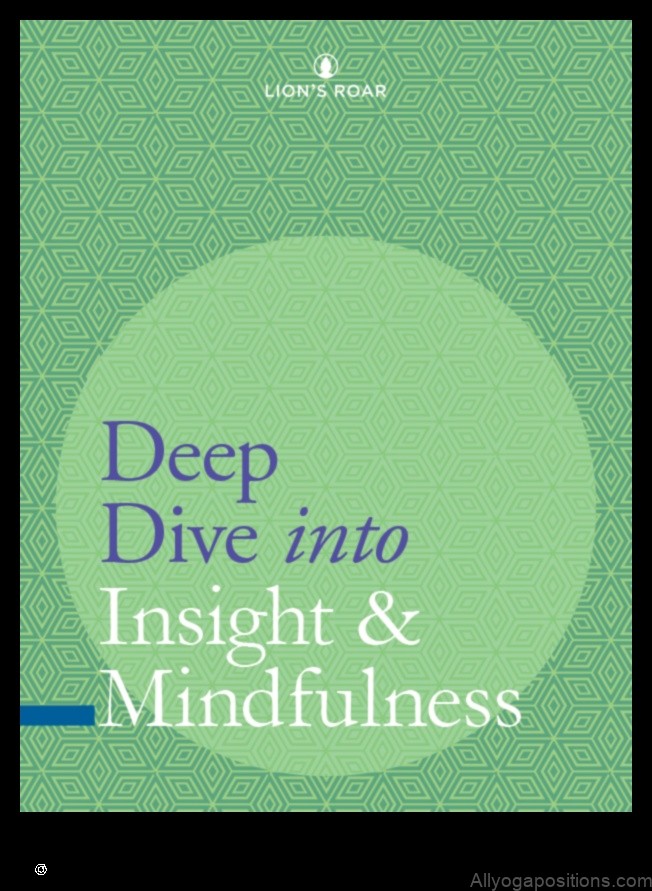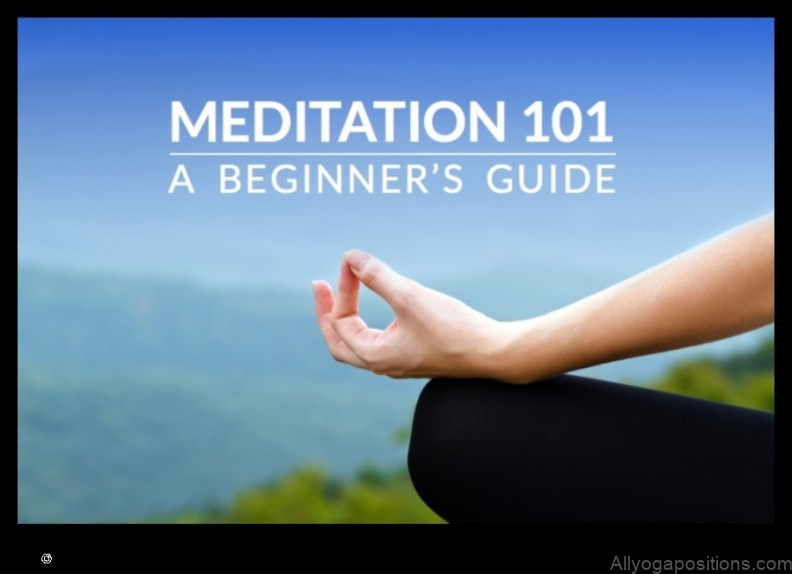
Deep Dive into Mindfulness: Meditation Explained and Explored
Mindfulness meditation is a type of meditation that focuses on bringing awareness to the present moment. It is a simple yet powerful practice that can help to improve your mental health, physical health, and relationships.
In this article, we will explore the basics of mindfulness meditation, including what it is, how it works, and how to practice it. We will also discuss the benefits of mindfulness meditation and how it can help you to live a happier and healthier life.

What is Mindfulness Meditation?
Mindfulness meditation is a type of meditation that focuses on bringing awareness to the present moment. It is a simple yet powerful practice that can help to improve your mental health, physical health, and relationships.
When you practice mindfulness meditation, you sit in a comfortable position and focus your attention on your breath. As you breathe in and out, you notice the sensations in your body and the thoughts that arise in your mind. You do not try to change or control your thoughts or feelings; you simply observe them with curiosity and acceptance.
Over time, mindfulness meditation can help you to develop a greater sense of awareness of your thoughts, feelings, and bodily sensations. It can also help you to learn to let go of negative thoughts and emotions, and to focus on the present moment.
How Does Mindfulness Meditation Work?
Mindfulness meditation works by helping you to develop a greater sense of awareness of your thoughts, feelings, and bodily sensations. This awareness can help you to learn to let go of negative thoughts and emotions, and to focus on the present moment.
When you are mindful, you are able to see your thoughts and feelings for what they are: simply thoughts and feelings. You do not have to believe them or act on them. This can help you to reduce stress and anxiety, and to make more mindful choices in your life.
Mindfulness meditation can also help you to develop a greater sense of compassion for yourself and others. When you are mindful, you are able to see yourself and others with greater clarity and understanding. This can help you to be more patient and understanding, and to build stronger relationships.

How to Practice Mindfulness Meditation
Mindfulness meditation is a simple practice that anyone can learn. It does not require any special equipment or training. You can practice mindfulness meditation anywhere, at any time.
To get started, find a comfortable place to sit where you will not be disturbed. You can sit on a chair, on the floor, or even in bed. Close your eyes and take a few deep breaths.
As you breathe in, say to yourself, “I am breathing in.” As you breathe out, say to yourself, “I am breathing out.” Continue to do this for a few minutes, or for as long as you like.
As you breathe, notice the sensations in your body. Notice the feeling of your breath on your skin, the feeling of your clothes on your body, and the feeling of your body against the chair or floor.
Also, notice the thoughts that arise in your mind. Do not try to change or control your thoughts; simply observe them with curiosity and acceptance.
Continue to practice mindfulness meditation for a few minutes each day. Over time, you will develop a greater sense of awareness of your thoughts, feelings, and bodily sensations. You will also learn to let go of negative thoughts and emotions, and to focus on the present moment.
Benefits of Mindfulness Meditation
Mindfulness meditation has been shown to have a number of benefits for both physical and mental health. These benefits include:
- Reduced stress and anxiety
- Improved mood
- Increased focus and concentration
- Better sleep
- Reduced pain
- Improved immune function
- Increased compassion
- Enhanced creativity
Mindfulness meditation can also help you to live a more mindful life. When you are mindful, you are more aware of your thoughts, feelings, and bodily sensations. You are also more aware of the present moment. This can help you to make more
| Topic | Feature |
|---|---|
| Meditation | Focus, relaxation, stress relief |
| Mindfulness | Awareness, acceptance, present moment |
| Relaxation | Calmness, peace, decreased tension |
| Stress relief | Reduced anxiety, improved mood |
| Mental health | Improved well-being, decreased depression |
What is mindfulness meditation?
Mindfulness meditation is a type of meditation that involves paying attention to the present moment, without judgment. It is a simple yet powerful practice that can help you to reduce stress, improve your mood, and increase your focus.
When you practice mindfulness meditation, you sit in a comfortable position and focus on your breath. As you breathe in, say to yourself, “I am breathing in.” As you breathe out, say to yourself, “I am breathing out.”
You can also focus on your body, your thoughts, or your emotions. If you notice that your mind wanders, simply bring your attention back to your breath.
Mindfulness meditation is a practice that takes time and effort to master. However, the benefits are well worth it. With regular practice, you can learn to live in the present moment, reduce stress, and improve your overall well-being.
How to practice mindfulness meditation
Mindfulness meditation is a simple practice that can be done anywhere, anytime. Here are the basic steps:
- Find a comfortable seat in a quiet place.
- Close your eyes and take a few deep breaths.
- Bring your attention to your breath. Notice the feeling of the air as it flows in and out of your body.
- As thoughts arise, let them go and return your attention to your breath.
- Continue to practice for as long as you like.
Mindfulness meditation can be challenging at first, but it is a powerful practice that can bring many benefits to your life. With regular practice, you will learn to be more present in the moment, less reactive to stress, and more connected to your inner self.
IV. Mindfulness meditation for beginners
Mindfulness meditation is a simple yet powerful practice that can help you to reduce stress, improve your mood, and live a more fulfilling life. It is a type of meditation that focuses on paying attention to the present moment, without judgment. When you practice mindfulness meditation, you are training your mind to be more aware of your thoughts, feelings, and bodily sensations. This can help you to become more present and engaged in your life, and to reduce the impact of stress and anxiety.
If you are new to meditation, there are a few things you can do to get started. First, find a quiet place where you will not be disturbed. You can sit in a chair, cross-legged on the floor, or lie down. Once you are comfortable, close your eyes and take a few deep breaths.
As you breathe, focus on the sensations in your body. Notice the feeling of the air as it flows in and out of your lungs. Notice the feeling of your body against the chair or floor. Bring your attention to any sounds you can hear, and to any smells or tastes you can experience.
Once you have settled into your meditation practice, you can begin to focus on your thoughts. Notice the thoughts that come into your mind, and let them go without judgment. Do not try to control your thoughts or to change them. Simply observe them as they arise and pass away.
Continue to practice mindfulness meditation for a few minutes each day. Over time, you will find that it becomes easier to focus on the present moment and to let go of stress and anxiety. You will also find that you are more present and engaged in your life.
V. Mindfulness meditation for stress
Mindfulness meditation can be a helpful way to manage stress. When you practice mindfulness meditation, you focus on the present moment and your breath. This helps you to become more aware of your thoughts and feelings, and to let go of the things that are causing you stress. Mindfulness meditation can also help you to relax and reduce your levels of cortisol, a stress hormone.
There are many different ways to practice mindfulness meditation. One simple way to get started is to sit in a comfortable position and close your eyes. Take a few deep breaths and focus on the sensation of your breath as it flows in and out of your body. Notice the feeling of your body against the ground or chair, and the sounds of your surroundings. As thoughts arise in your mind, let them go and bring your attention back to your breath. Continue to practice for a few minutes, or for as long as you like.
Mindfulness meditation can be practiced anywhere, and it can be helpful to practice it at times when you are feeling stressed. For example, you could practice mindfulness meditation before a stressful event, such as a job interview or a test. You could also practice mindfulness meditation during a stressful situation, such as when you are feeling overwhelmed or anxious.
Mindfulness meditation can be a helpful way to manage stress and improve your overall well-being. If you are interested in learning more about mindfulness meditation, there are many resources available online and in libraries. You can also find classes in mindfulness meditation at your local community center or yoga studio.
VI. Mindfulness meditation for anxiety
Mindfulness meditation can be a helpful tool for managing anxiety. When you practice mindfulness meditation, you learn to pay attention to your thoughts and feelings without judgment. This can help you to identify the triggers for your anxiety and to develop strategies for coping with them. Mindfulness meditation can also help you to relax and to reduce the physical symptoms of anxiety, such as muscle tension and sweating.
There are a number of different ways to practice mindfulness meditation. One simple way to start is to sit in a comfortable position and focus on your breath. As you breathe in, say to yourself, “I am breathing in.” As you breathe out, say to yourself, “I am breathing out.” Continue to do this for a few minutes, or for as long as you like.
You can also practice mindfulness meditation while you are doing other activities, such as walking, eating, or washing the dishes. Simply pay attention to the sensations in your body and the thoughts that are going through your mind. Try to let go of any judgments or expectations that you have, and simply observe your experience without trying to change it.
Mindfulness meditation is not a cure for anxiety, but it can be a helpful tool for managing the symptoms. If you are struggling with anxiety, it is important to seek professional help. A therapist can help you to develop a personalized treatment plan that includes mindfulness meditation and other strategies for managing anxiety.
VII. Mindfulness meditation for depressionMindfulness meditation has been shown to be effective in reducing symptoms of depression. A study published in the journal JAMA Internal Medicine found that mindfulness meditation was as effective as cognitive-behavioral therapy (CBT) in reducing symptoms of depression.
Another study, published in the journal Psychiatry Research, found that mindfulness meditation was effective in reducing symptoms of depression in people with chronic pain.
If you are interested in trying mindfulness meditation to help with your depression, there are a number of resources available. You can find guided mindfulness meditations online or in books. You can also attend mindfulness meditation classes in your community.
It is important to note that mindfulness meditation is not a substitute for professional medical care. If you are struggling with depression, it is important to seek professional help.
Mindfulness meditation for sleep
VIII. Mindfulness meditation for sleep
Mindfulness meditation can be a helpful way to improve sleep quality. When you practice mindfulness meditation, you focus on your breath and the present moment, which can help to quiet your mind and relax your body. This can make it easier to fall asleep and stay asleep.
There are a few different ways to practice mindfulness meditation for sleep. One simple way is to sit in a comfortable position and focus on your breath. As you breathe in, say to yourself, “I am breathing in.” As you breathe out, say to yourself, “I am breathing out.” Continue to do this for a few minutes, or for as long as you like.
Another way to practice mindfulness meditation for sleep is to lie in bed and focus on your body. Starting at your toes, slowly scan your body and pay attention to any sensations you feel. Notice the feeling of your feet against the bed, the feeling of your legs against the bed, and so on. Continue to scan your body until you reach your head.
As you scan your body, try to relax any areas that feel tense or tight. You can also imagine that you are sending waves of relaxation throughout your body.
Mindfulness meditation for sleep can take some practice, but it can be a very effective way to improve your sleep quality. If you are struggling to sleep, try practicing mindfulness meditation for a few weeks and see if it makes a difference.
IX. Mindfulness meditation for pain
Mindfulness meditation can be helpful for managing pain in a number of ways.
First, mindfulness meditation can help you to become more aware of your pain. When you are mindful, you are able to observe your pain without judgment or reactivity. This can help you to distance yourself from the pain and to see it more objectively.
Second, mindfulness meditation can help you to learn to tolerate pain more effectively. When you are mindful, you are able to focus on the present moment and to let go of thoughts about the past or the future. This can help you to stay in the present moment and to focus on coping with the pain that you are experiencing in the here and now.
Third, mindfulness meditation can help you to change your relationship to pain. When you are mindful, you are able to see pain as a natural part of the human experience. This can help you to accept pain and to let go of the need to fight it or to control it.
If you are experiencing pain, mindfulness meditation can be a helpful tool for managing it. However, it is important to note that mindfulness meditation is not a substitute for medical treatment. If you are experiencing chronic pain, it is important to see a doctor to rule out any underlying medical conditions.
Here are some tips for practicing mindfulness meditation for pain:
- Find a comfortable place to sit or lie down.
- Close your eyes and focus on your breath.
- As you breathe in, say to yourself, “I am breathing in.” As you breathe out, say to yourself, “I am breathing out.”
- Continue to focus on your breath for a few minutes.
- When you notice that your mind has wandered, gently bring your attention back to your breath.
- Repeat this process for 10-20 minutes.
Mindfulness meditation for pain is a practice that takes time and dedication. However, with regular practice, it can be a helpful tool for managing pain and improving your overall well-being.
FAQ
Q: What is mindfulness meditation?
A: Mindfulness meditation is a type of meditation that involves paying attention to the present moment, without judgment. It is a way of training the mind to focus on the here and now, and to let go of thoughts about the past or the future.
Q: What are the benefits of mindfulness meditation?
A: Mindfulness meditation has been shown to have a number of benefits, including reducing stress, improving mood, increasing focus, and promoting relaxation. It can also be helpful for managing chronic pain, anxiety, and depression.
Q: How do I practice mindfulness meditation?
A: There are many different ways to practice mindfulness meditation. One simple way is to sit in a comfortable position, close your eyes, and focus on your breath. As you breathe in, say to yourself, “I am breathing in.” As you breathe out, say to yourself, “I am breathing out.” Continue to do this for a few minutes, or for as long as you like.
Q: Is mindfulness meditation safe?
A: Mindfulness meditation is generally safe for most people. However, it is important to note that it can sometimes trigger anxiety or other negative emotions. If you experience any negative side effects from mindfulness meditation, it is important to stop practicing and talk to your doctor.
Q: Where can I learn more about mindfulness meditation?
A: There are many resources available to learn more about mindfulness meditation. You can find books, online courses, and even apps that can teach you how to practice mindfulness meditation. You can also find mindfulness meditation classes at your local community center or yoga studio.
Table of Contents
Maybe You Like Them Too
- Yoga for Energy Flow How to Tap into Your Life Force
- Half Lord of the Fishes Pose A Gentle Stretch for Your Back and Neck
- Meditation and Mindful Parenting How to Nurture Children with Presence
- Ananda Balasana A Gentle Yoga Pose for Rest and Relaxation
- Skull Shining Breath A Yoga Pose for Clearing the Mind and Opening the Heart
